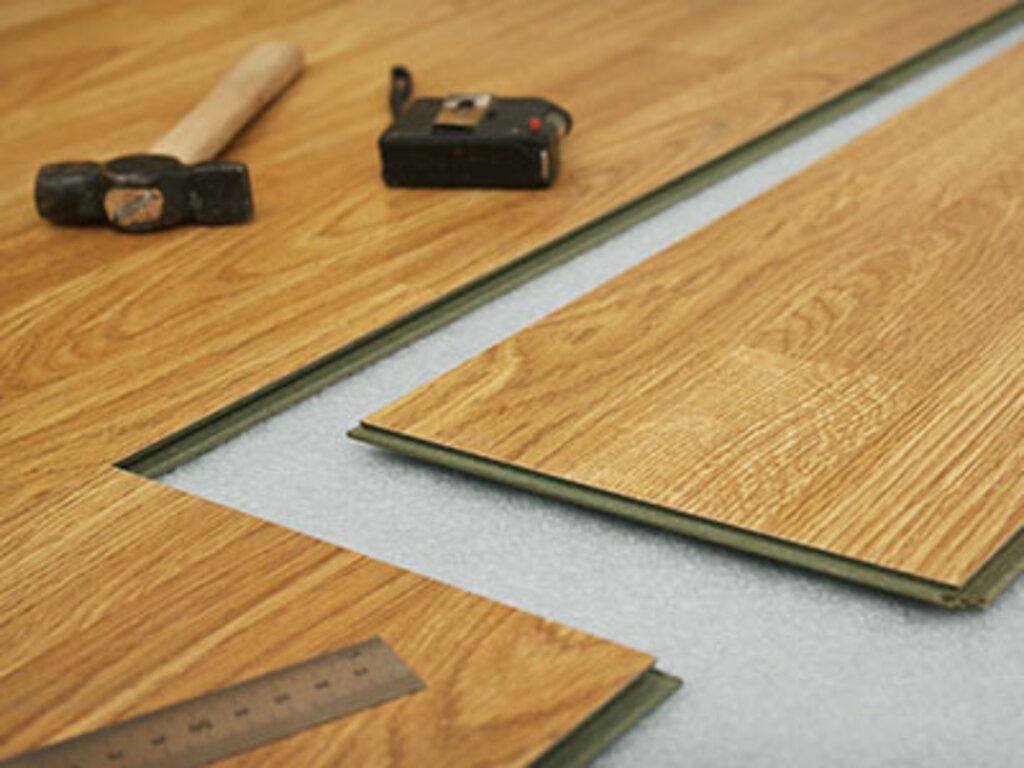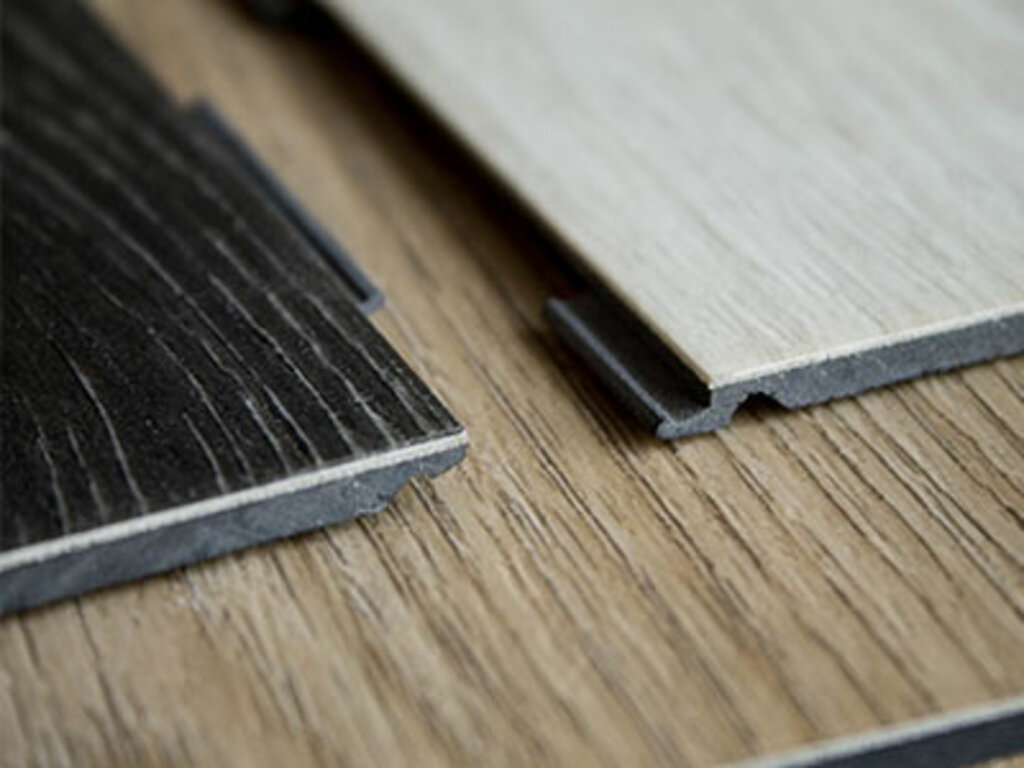LVT vs Laminate Flooring - Pros, Cons and Differences
 When it comes to flooring options, homeowners are often faced with the choice between LVT and laminate flooring. Both options have their own set of pros and cons, and understanding the differences between them is essential before making a decision. Laminate flooring is a popular choice due to its affordability and ease of installation. Made of several layers of compressed fibreboard with a printed image of wood or stone on top, laminate offers a durable and low-maintenance solution. However, laminate can be prone to scratches and may not hold up well against moisture.
When it comes to flooring options, homeowners are often faced with the choice between LVT and laminate flooring. Both options have their own set of pros and cons, and understanding the differences between them is essential before making a decision. Laminate flooring is a popular choice due to its affordability and ease of installation. Made of several layers of compressed fibreboard with a printed image of wood or stone on top, laminate offers a durable and low-maintenance solution. However, laminate can be prone to scratches and may not hold up well against moisture.
On the other hand, luxury vinyl tile (LVT) is known for its realistic design and high level of durability. Made of multiple layers of vinyl, LVT can mimic the look of tiles, hardwood, or stone. It is also water-resistant, making it an ideal choice for bathrooms and kitchens. However, LVT can be more expensive compared to laminate. We will delve into the pros, cons, and differences between LVT and laminate flooring, providing you with the necessary information to make an informed decision for your home.
Comparing LVT and Laminate Flooring
LVT (Luxury Vinyl Tile) and laminate flooring are two popular options for homeowners looking to upgrade their floors. LVT is a type of synthetic flooring that mimics the look and feel of natural materials like wood or stone, while laminate flooring is made of multiple layers of synthetic materials that are designed to resemble real hardwood. It is important for homeowners to understand the differences between these two options in order to make an informed choice that suits their needs and preferences.
While both LVT flooring and laminate are durable, affordable, and easy to maintain, there are some key factors to consider when choosing between the two. LVT is known for its superior water resistance, making it a perfect choice for kitchens, bathrooms, or other high-moisture areas. On the other hand, laminate flooring provides a more realistic wood appearance and may be a better option for those who desire an authentic hardwood look. Additionally, homeowners should consider their budget, installation preferences, and durability requirements before making a decision. By understanding these differences and considering these factors, homeowners can confidently choose the right flooring option for their home.
The Pros and Cons of Laminate Flooring
 Laminate flooring is a popular choice for homeowners due to its affordability and budget-friendly nature. It provides an inexpensive alternative to hardwood flooring, mimicking the look of natural wood but without the hefty price tag. One of the biggest advantages of laminate flooring is its easy installation process. It can be quickly and easily installed by homeowners, saving them both time and money. Laminate plank consists of multiple layers, including a wear layer, a decorative layer, and a backing layer. These layers are fused together through a lamination process to create a durable and sturdy flooring option. Laminate flooring is known for its durability and low-maintenance features.
Laminate flooring is a popular choice for homeowners due to its affordability and budget-friendly nature. It provides an inexpensive alternative to hardwood flooring, mimicking the look of natural wood but without the hefty price tag. One of the biggest advantages of laminate flooring is its easy installation process. It can be quickly and easily installed by homeowners, saving them both time and money. Laminate plank consists of multiple layers, including a wear layer, a decorative layer, and a backing layer. These layers are fused together through a lamination process to create a durable and sturdy flooring option. Laminate flooring is known for its durability and low-maintenance features.
It is resistant to stains, scratches, and fading, making it a great choice for high-traffic areas. Additionally, it is easy to clean and requires minimal maintenance. However, laminate flooring is vulnerable to scratches and moisture issues. Although some laminate floors have a high resistance to scratches, others are more susceptible. It is also important to note that excessive moisture can cause the flooring to warp or swell, making it unsuitable for areas prone to high humidity or water exposure. Overall, laminate flooring is a practical and cost-effective choice, but it is important to consider its susceptibility to scratches and moisture before making a decision.
Laminate vs. LVT: Understanding the Key Differences
When it comes to laminate vs. LVT, it's important to understand the key differences between the two flooring types. In terms of appearance, laminate is known for its realistic wood look, while LVT offers a wider range of designs, including stone and tile. While both options are durable, LVT is more resistant to moisture and scratches, making it a better choice for high-moisture areas like bathrooms and kitchens. On the other hand, laminate is generally more affordable than LVT.
The choice of flooring type also depends on the room. Laminate flooring is suitable for bedrooms, living rooms, and hallways, while LVT can be installed in any room in the house. When it comes to installation, laminate typically requires a foam underlayment and is easier to install as a floating floor. LVT, on the other hand, is often glued down, providing a more stable and rigid floor.
Maintenance for laminate and LVT floor is relatively easy, with both requiring regular sweeping and occasional mopping. However, laminate should be protected from excessive moisture, while LVT is waterproof and can withstand wet mopping.
One common misconception is that both laminate and LVT are the same thing. While they may have a similar appearance, their composition and installation methods are different. Another misconception is that laminate is a cheap alternative to LVT. While it may be more budget-friendly, laminate offers its own unique benefits that make it a popular choice for many homeowners. Understanding the key differences between laminate and LVT can help you make an informed decision when choosing the right flooring for your space.
Unveiling the Benefits of Luxury Vinyl Tile (LVT)
 One of the most notable advantages of LVT is its realistic design and aesthetic appeal. With advances in technology, the vinyl plank can now mimic the look of natural materials such as wood, stone, and even ceramic tiles, allowing homeowners to achieve a high-end look without the high price tag. Durability is another key attribute of LVT. It is highly resistant to wear and tear, making it perfect for high-traffic areas such as hallways, entryways, and living rooms. Additionally, LVT is water-resistant, making it an excellent choice for wet areas such as bathrooms and kitchens.
One of the most notable advantages of LVT is its realistic design and aesthetic appeal. With advances in technology, the vinyl plank can now mimic the look of natural materials such as wood, stone, and even ceramic tiles, allowing homeowners to achieve a high-end look without the high price tag. Durability is another key attribute of LVT. It is highly resistant to wear and tear, making it perfect for high-traffic areas such as hallways, entryways, and living rooms. Additionally, LVT is water-resistant, making it an excellent choice for wet areas such as bathrooms and kitchens.
Unlike natural materials, LVT does not absorb water, preventing warping or damage. Another advantage of LVT is its flexibility in mimicking various materials. This versatility allows homeowners to create cohesive designs throughout their homes, even in rooms with different flooring needs. However, it is important to consider the cost of LVT. While it may be more affordable than its natural counterparts, it is still an investment. Homeowners should carefully consider their budget and weigh the long-term benefits before making a decision. In conclusion, the benefits of LVT, such as realistic design, durability, water resistance, and flexibility, make it a versatile and practical choice for flooring.
Choosing the Right Flooring for Your Home
Choosing the right flooring for your home is a decision that requires careful consideration. Firstly, evaluating your specific needs and preferences is crucial. Think about factors such as the amount of foot traffic each room receives, the presence of pets or children, and your personal style. Practical tips for making an informed decision include researching various flooring options, comparing their pros and cons, and seeking expert advice if needed.
Additionally, consider the function of each room when selecting flooring. For example, carpet may be a cosy choice for a bedroom, but not the most practical for a high-traffic area like the kitchen. Balancing cost, appearance, and durability is also important when choosing the right flooring. While you want your flooring to enhance the aesthetic of your home, you also need to take into account your budget and how long you want the flooring to last. Furthermore, it is essential to consider long-term maintenance and care.
Some flooring options require regular upkeep and special cleaning products, while others are more low maintenance. It is crucial to be aware of the maintenance requirements of the flooring you choose to ensure that you can properly care for it in the future. Choosing the right flooring involves considering your specific needs, the function of each room, cost, appearance, durability, and long-term maintenance. Taking the time to carefully evaluate these factors will help you make an informed decision that you will be happy with for years to come.